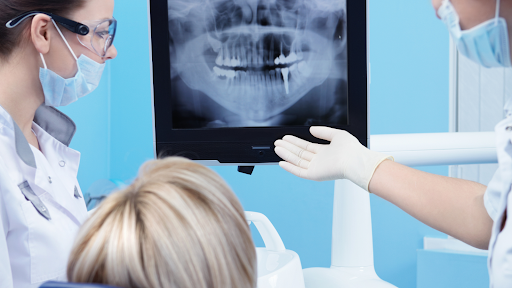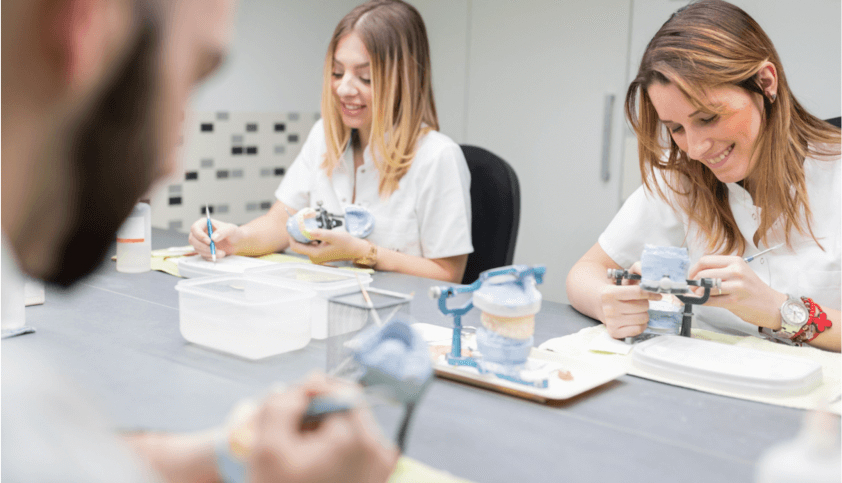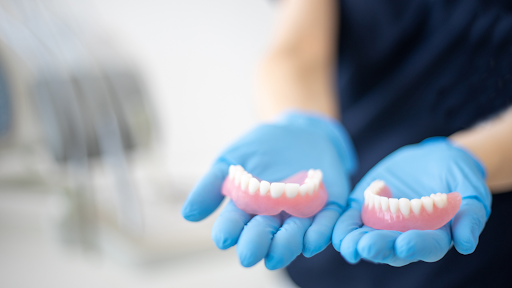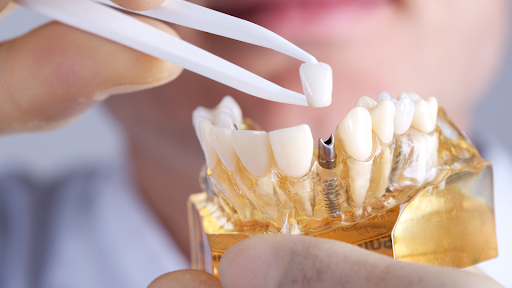Blog
Apr 17, 2020
Dental Laboratories And Digital Dentistry: The Future Is Here

Dental Laboratories And Digital Dentistry: The Future Is Here
Dental laboratories have made great progress in recent years with the introduction of digital dentistry.
This development has revolutionized the dental industry, making it easier for technicians to fabricate high-quality restorations and prostheses.
Digital technology provides a level of accuracy significantly higher than achievable using conventional techniques.
By utilizing computer-aided design (CAD) software and 3D printing, custom dental appliances can be completed quickly, efficiently, and accurately.
With these advantages come many potential applications and opportunities for growth within this sector of the dental profession.
This article will explore how digital dentistry is changing the way dental laboratories operate and discuss its impact on patient outcomes.
Background Of Dental Laboratories
Dental labs have long been vital to the dental industry, providing critical services for dentists and their patients.
They offer custom-made crowns, bridges, inlays, and onlays to restore the function and aesthetic of teeth damaged by trauma or decay.
Dental technicians also fabricate removable prostheses such as full and partial dentures.
With advances in modern technology, digital dentistry has transformed how dental labs operate with increased speed and accuracy while decreasing production costs.
This new development has opened up possibilities previously unimaginable in the field of restorative dentistry, paving the way for greater patient satisfaction.
Digital dentistry will continue to revolutionize the industry and further enhance its capabilities.
Related : How Dental Laboratory Services in Dubai are Revolutionizing Restorative Dentistry?
Introduction To Digital Dentistry

Dentistry has come a long way in terms of technological advances. Digital dentistry is now at the forefront, with digital tools and techniques revolutionizing the dental laboratory industry.
Computer-aided design (CAD) and computer-assisted manufacture (CAM) are two primary methods used in digital dentistry to create prostheses such as dental crowns, bridges, partial dentures, implant abutments, and orthodontic appliances. With CAD/CAM technology, complex designs can be quickly created and manufactured precisely according to specifications set by the dentist.
The accuracy and speed afforded by these technologies have improved patient care and satisfaction levels in dental labs worldwide. By embracing this new technology, dental laboratories can stay ahead of their competition while ensuring quality results for patients.
Moving forward, it’s clear that advancements in digital dentistry will continue to shape the future of modern dentistry.
Related: Digital dentistry: an overview of recent developments for CAD/CAM generated restorations
Advancements In Digital Dentistry
Recent advancements in digital dentistry have revolutionized the way dental labs operate. A recent survey found that 93% of dentists are now using digital technologies to improve their workflow and increase efficiency.
This shift towards increased utilization of digital technology has allowed for a more automated approach to dentistry, with greater accuracy and less human error than ever before. Digital scanners can capture precise images of teeth, making the process faster and easier than manual impressions.
3D printers are also becoming increasingly popular within dental practices; they provide an efficient method for producing prostheses such as crowns and bridges at a fraction of the cost and time compared to traditional laboratory processes.
These technological advances have significantly changed how dental labs operate, enabling them to expand their services beyond just traditional means. As the industry continues to evolve, so will the use of digital tools by practitioners and technicians alike, paving the way for a bright future in digital dentistry.
With these innovations come opportunities for improved patient care, higher quality results, and reduced costs—allowing clinicians to focus on providing quality service while reducing strain on their budgets.
Transitioning into this section about ‘the future of dental laboratories and digital dentistry’, it is clear that there is great potential for further improvements in both clinical practice and laboratory operations through continued investment in modern technologies.
Related : Behind the Scenes of a Dental Lab in Dubai: A Day in the Life of a Dental Technician
Notable Advancements
- Improved accuracy and precision in dental restorations
- Reduced turnaround time for dental restorations
- Enhanced aesthetic results in dental restorations
- Increased customization of dental restorations
- Virtual planning and simulation of dental implant placement
- Use of artificial intelligence for analysis of dental images and data
- Advanced software for diagnosis, treatment planning, and communication with patients and other healthcare professionals.
The Future Of Dental Laboratories And Digital Dentistry

The advances in dental laboratory technology make it easier for dentists and technicians to create accurate, reliable prosthetics.
3D printing has revolutionized manufacturing, allowing for greater accuracy and consistency with each product.
Digital scanning techniques allow for quicker project turnaround time while still providing excellent quality results.
Additionally, CAD/CAM systems provide unparalleled precision when creating crowns, bridges, and other restorations.
All these technological advancements have allowed dental labs to produce high-quality products faster than ever.
As we progress, even more improvements can be expected in this field as digital technologies become increasingly sophisticated.
Having said that, now is an exciting time for dental laboratories as they strive towards new heights of efficiency and precision by utilizing digital technologies.
Advancements In Dental Labs
The advancements in dental labs have revolutionized the way dentistry is done. From 3D printing to digital modeling, there are many options available for practitioners and patients alike.
- 3D Printing
Digital models can be used to create precise physical impressions using 3D printers. These prints allow for customized restoration designs that fit perfectly with each patient’s unique mouth structure. Additionally, these printed parts can be made from materials such as gold alloys or ceramic composites offering greater strength and longevity than traditional acrylic restorations.
- Digital Modeling
The use of digital modeling offers improved accuracy when creating prosthetic crowns, bridges, and veneers. This technology allows practitioners to design detailed restorations on the computer screen before sending them to a dental laboratory for fabrication. With this method, clinicians can always ensure a perfect fit without any guesswork in determining size or shape specifications by hand.
By utilizing these advances alongside traditional processes, dental laboratories can provide quality results quickly and cost-effectively, allowing practitioners easier access to more complex treatments and services within their practices.
Moving forward into the next section, we will explore how the integration of digital dentistry has changed the face of modern-day dental care.
Integration Of Digital Dentistry In Dental Labs
Integrating digital dentistry into dental laboratories has revolutionized how technicians and clinicians work together. With 3D printing, CAD/CAM technology, and intraoral scanning, it is now possible to create precise restorations in less time than ever.
Digital technologies enable more accurate diagnosis and treatment planning while allowing faster production times with improved accuracy. The use of these digital tools has streamlined the process of creating prosthetic devices such as crowns and bridges. By using digital scans instead of physical impressions, there is a reduction in remakes due to improper fitting or inaccuracy.
As a result, patients can receive better care at a lower cost with shorter turnaround times. In addition, digital solutions allow for greater collaboration between practitioners in different locations which provide increased access to patient records and data-sharing capability across multiple sites.
Related : The Importance Of Attention To Detail In Denture Fabrication: Lessons From A Denture Lab Technician
Conclusion
The introduction of digital dentistry has been a major advancement for dental laboratories, allowing them to provide more accurate results with less time spent. Despite its advantages, there is still some hesitation from those unfamiliar or uncomfortable with the technology.
However, when used properly and combined with traditional methods, digital dentistry can provide better outcomes while saving money and resources. Digital dentistry should be seen as something other than traditional laboratory techniques but as a complement that adds additional capabilities and accuracy.
As further advancements are made in both dental labs and digital dentistry, their integration is expected to become even easier and more efficient. This will improve patient satisfaction and greater productivity for those working in the field.






